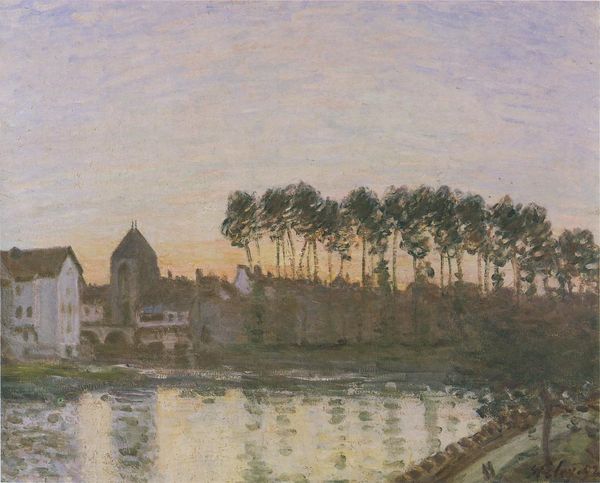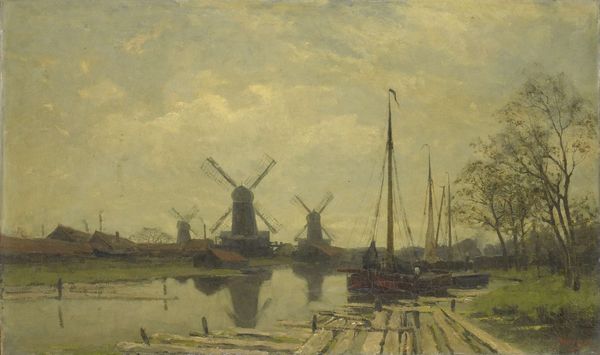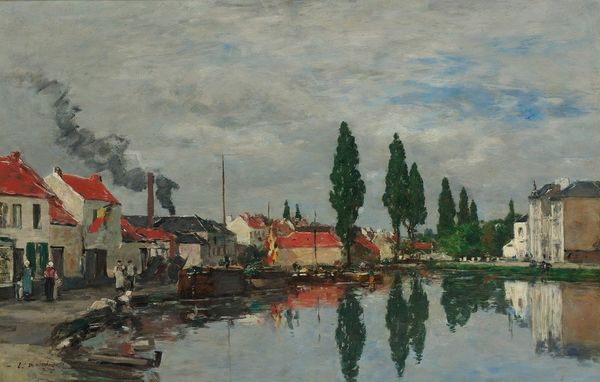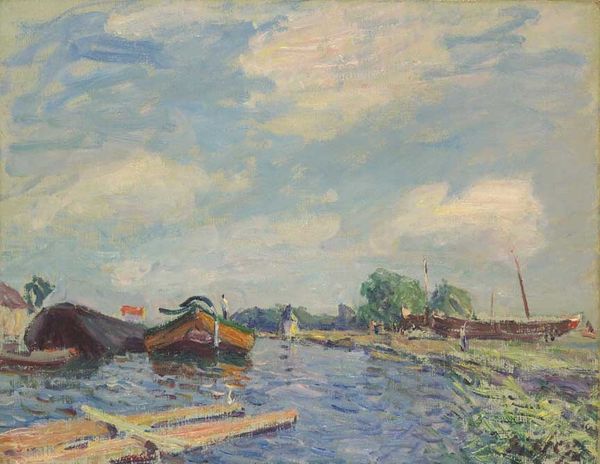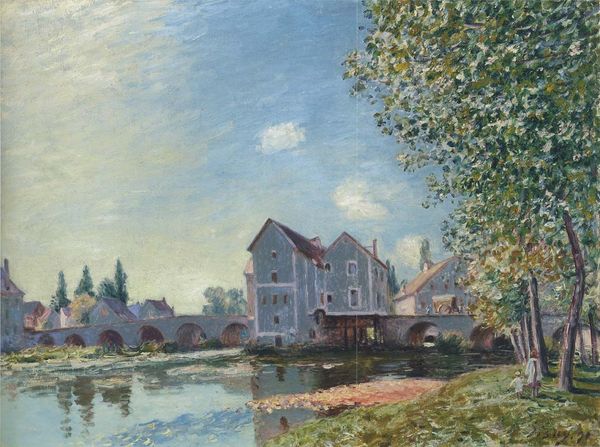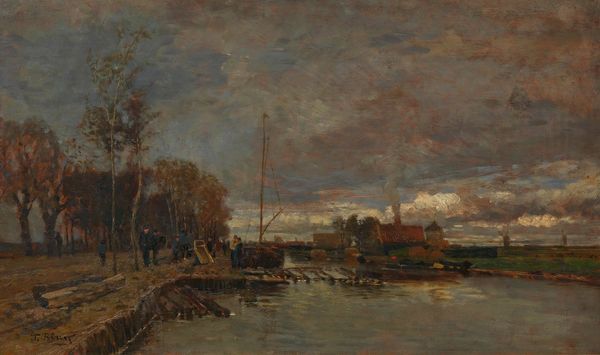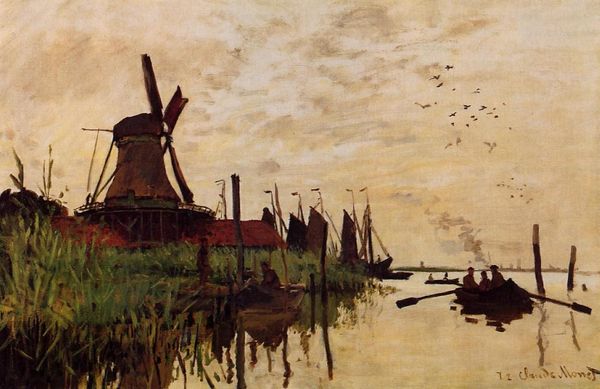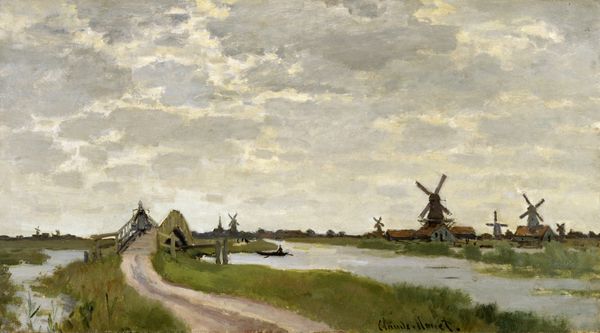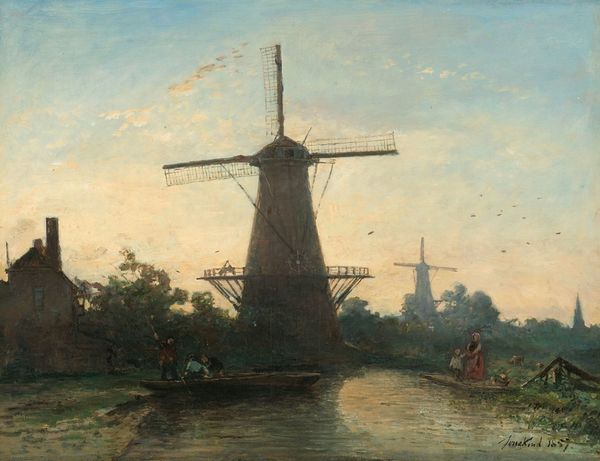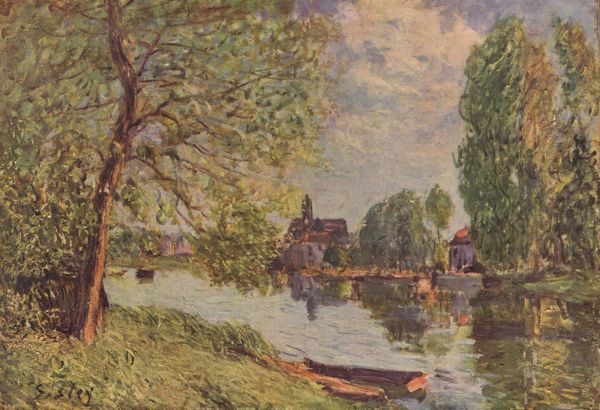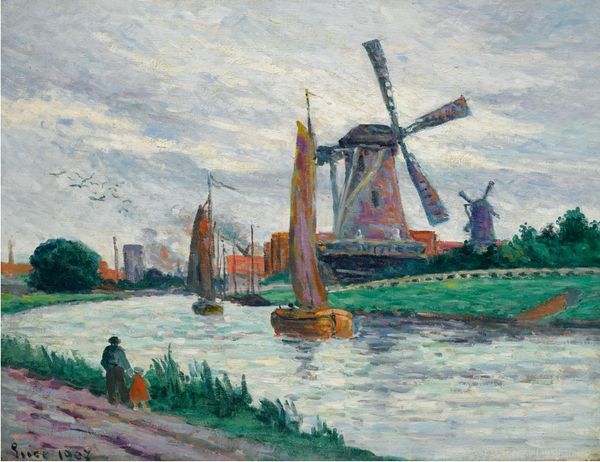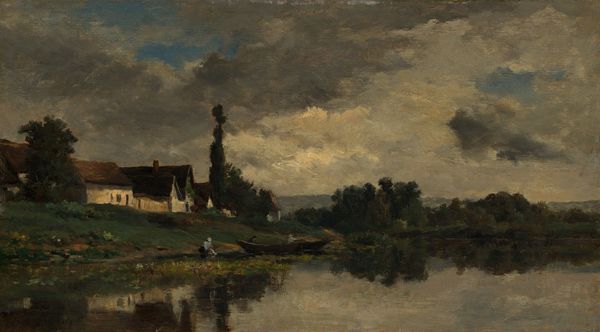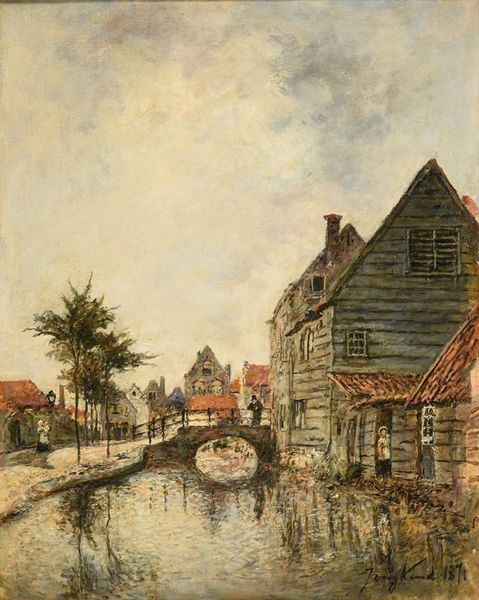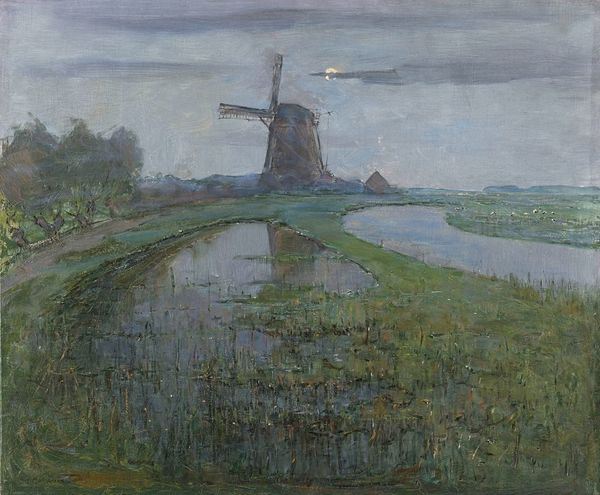
Copyright: Public Domain: Artvee
Editor: We are looking at Johan Barthold Jongkind’s "Effet De Lune Sur L’estuaire, Hollande" from 1867, an oil painting that presents a nocturne scene in Holland. I am immediately struck by the contrast between the stillness of the water and the implied movement of the windmill sails. What stands out to you from a formal perspective? Curator: Precisely. The composition, predominantly horizontal, is cleverly interrupted by the verticality of the windmills and trees, creating a visual rhythm. Note how Jongkind utilizes light and shadow. The moon, a focal point, casts a shimmering reflection on the water. Observe the brushwork: short, broken strokes, characteristic of early Impressionism. How do these techniques influence your perception of depth and space within the painting? Editor: The broken brushstrokes seem to dissolve the forms, almost making it feel like a fleeting memory rather than a concrete scene. They also make it harder to see, but with greater aesthetic compensation. It creates a kind of ethereal effect that enhances the sense of atmosphere, a quality that seems amplified by the subtle gradations of colour. How does Jongkind manage this feeling of a hazy, atmospheric space, despite the comparative simplicity of the composition? Curator: Notice the limited palette. Jongkind primarily employs cool blues, greys, and muted yellows. This chromatic restraint enhances the moonlit ambiance and creates a cohesive visual field. The texture, achieved through impasto in certain areas, contrasts with the smoother, thinly applied paint elsewhere, creating subtle variations on the surface. What do you make of this tension between flat planes of colour and the illusion of depth? Editor: I think that's part of why the scene has an incredibly timeless quality for me. Jongkind’s focus is less on recreating the perfect optical likeness of the place. I now realise the composition seems to be all about the careful organisation of painterly textures to capture the atmospheric effect. I appreciate that observation; I think it completely transformed the image for me. Curator: Indeed, and appreciating such relationships, we can understand the intent as not the faithful reproduction of reality but the aesthetic capture of a temporal impression.
Comments
No comments
Be the first to comment and join the conversation on the ultimate creative platform.
